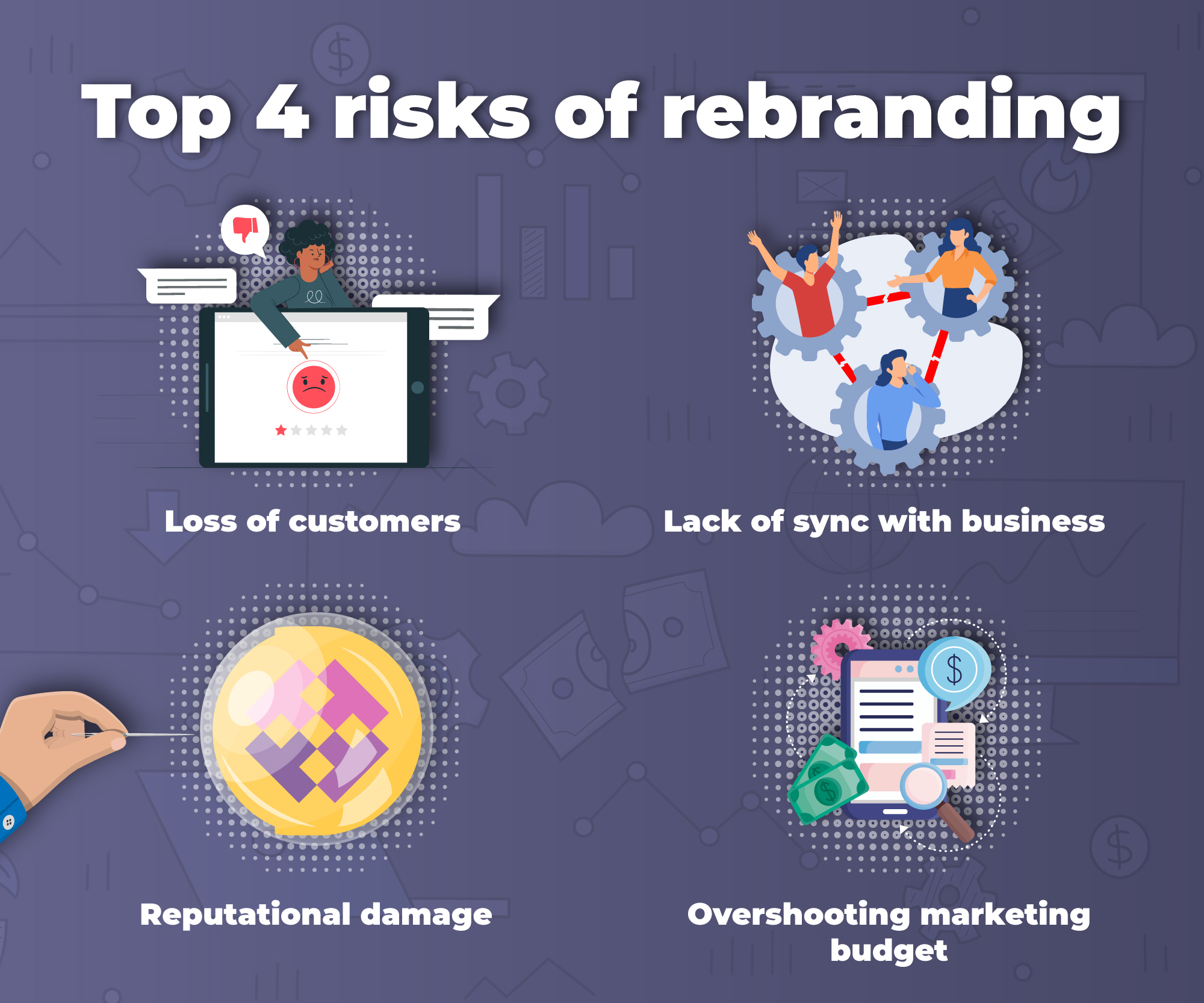
A market is a merciless place. Companies must fight tooth and nail to survive challenging periods and act smartly during boom phases to thrive. With consumer demand and preferences constantly changing, enterprises must set up new strategies and modify existing ones accordingly. That is the only way to stay relevant and maintain their edge in the market. These strategies include launching novel products or services or both, expanding into new markets, collaborating with competitors, engaging in price wars, and adopting advanced technologies to optimise their operations. Having a gainful rebranding marketing strategy is one unique and creative step players value to get ahead of the market curve.
Let’s understand ‘branding’ first.
When a company wishes to enter a market, it needs a product distinct from the existing products of the exact nature in that market. Therefore, it devises various marketing strategies, such as tying up with an established player, to increase the visibility and appeal of its offering to its target audience. This is the branding phase. As the product gains recognition and acceptability, which can take years, the product and the company become synonymous. For example, today, Apple and iPhones are the same for people.
Rebranding as a marketing strategy
A company resorts to rebranding when it intends to reposition itself in the market. Here, rebranding does not necessarily involve a company completely overhauling its image or changing the fundamental appeal of its products and services. Instead, rebranding is subtle enough for the company not to disturb its existing customer base. However, it is still discernible enough for the market to know that the company has shifted gears. For example, when a company changes its logo, it signals a change in its stance in the market. The modified logo represents what the company stands for in the present times. Such activities make waves in the market and can take a brand to new heights or prove catastrophic for the company.
The components of rebranding as a marketing strategy
Brands, once established, have a way of sticking in people’s minds because of the experience and exclusivity they offer. A rebranding exercise, therefore, is a calculated risk for the company. Given how quickly public perception can change, which factors should companies consider before rebranding?
(1) Purpose
First and foremost, a company needs clarity about why it needs to undertake rebranding in the first place. Is it just for the sake of doing it? Or because its top rival is doing the same? In either of the two cases, rebranding is likely to do more harm than good, as the marketing effort will pull on the company’s resources that they could have used more productively elsewhere. More importantly, the whole exercise might prove to be an utter failure. GAP, the incredibly famous clothing retailer, is an excellent example. In 2010, the brand decided to change its logo following shrinking sales in the wake of the 2008 global recession. Unfortunately, the abrupt change of its iconic, two-decade-old logo confused customers and received a massive backlash. Ultimately, it forced the company to revert to its original logo. This whole rebranding initiative cost GAP $100 million. Thus, if your brand is well-established and commands consumer interest and appeal, there is no rational reason to change any aspect of it.
(2) Strategy
Next, if a company is convinced it needs to rebrand, it also needs to have a well-thought-out marketing strategy. Of course, this has to be backed by rock-solid implementation plans. I won’t deny that old-school billboards and newspaper advertisements are still popular marketing channels. However, companies need to formulate a social media strategy in today’s digital age to publicise the rebranded logo, design, tagline, or all of the above. This strategy provides a channel for the brand to communicate the purpose of its rebranding. In addition, the brand can further assure its consumers that the rebranding in no way diminishes its product/service. Once these factors are taken care of, half the battle is won.
The next step is effectively presenting the existing product in a new light. A classic example is when Old Spice released a series of commercials for its deodorants. The tagline said, “Anything is possible when your man smells like Old Spice and not a lady”. This tagline focused on the core selling point of Old Spice, the fragrance of its deodorants, and made the product immediately distinguishable from its competitors. The rebranding, as is evident, was a roaring success.

(3) Focus
Rebranding is particularly useful when a company with a global following and a loyal customer base seeks to enter an unexplored market. In this case, the company must diligently assess its target market potential. In addition, it must also consider how long it will be able to maintain a healthy presence among prospective customers. KFC, for instance, modified its famous menu to include purely vegetarian options when it set up shop in Gujarat, India, in 2011. This modification was a welcome move in the state, known for its largely vegetarian population. Today, the US brand has become ubiquitous in all major Indian cities, offering vegetarian and non-vegetarian delights to customers across the country. The American fast-food chain, Subway also went the extra mile to expand its presence in the Indian market. In 2013, the franchise opened its first-ever Jain food counter at its all-vegetarian outlet in Ahmedabad, Gujarat. Rebranding as a marketing strategy can be immensely profitable if used wisely.
(4) Sustainability
One of the top trends in the market is sustainability rebranding. Companies are adopting this new breed of rebranding to strategically position themselves as leaders in sustainable business practices and active contributors in the fight against climate change. The most prominent example of this aspect is the renaming of the Norwegian oil giant Statoil as Equinor. The Norwegian government established Statoil in 1972, to strengthen the country’s position as a major oil supplier in the global market. In 2018, the name change to ‘Equinor’ combined the principles of equity and equilibrium with Norway’s culture and history (‘equi’ + ‘nor’). The rebranding was a smart move. It was also a timely move, seeing as the increasing number of climate-conscious people in Scandinavia and around the world would relate to and be more accepting of a brand name that does not have the word “oil” attached to it.
A more recent example is the rebranding of Ramky Enviro, an environmental services company. In March 2022, the company donned a brand new identity under ‘Re Sustainability’ to symbolise its goal towards building a circular economy model.
Rebranding marketing strategy: a hit-or-miss affair
Rebranding is a considerable risk that a company undertakes. If it misses the mark, the company faces many problems, including a loss of reputation, eroding customer base, and financial woes. On the other hand, if planned well and implemented intelligently, a rebranding marketing exercise could open the floodgates of profits, new customers, and untapped markets for a company. Evidence exists for both cases, but companies need to remember to take stock of the changing market conditions and decide on rebranding accordingly. A company should engage in rebranding if there is an intense need to tweak a well-performing brand. Otherwise, if it ain’t broke, don’t fix it.



